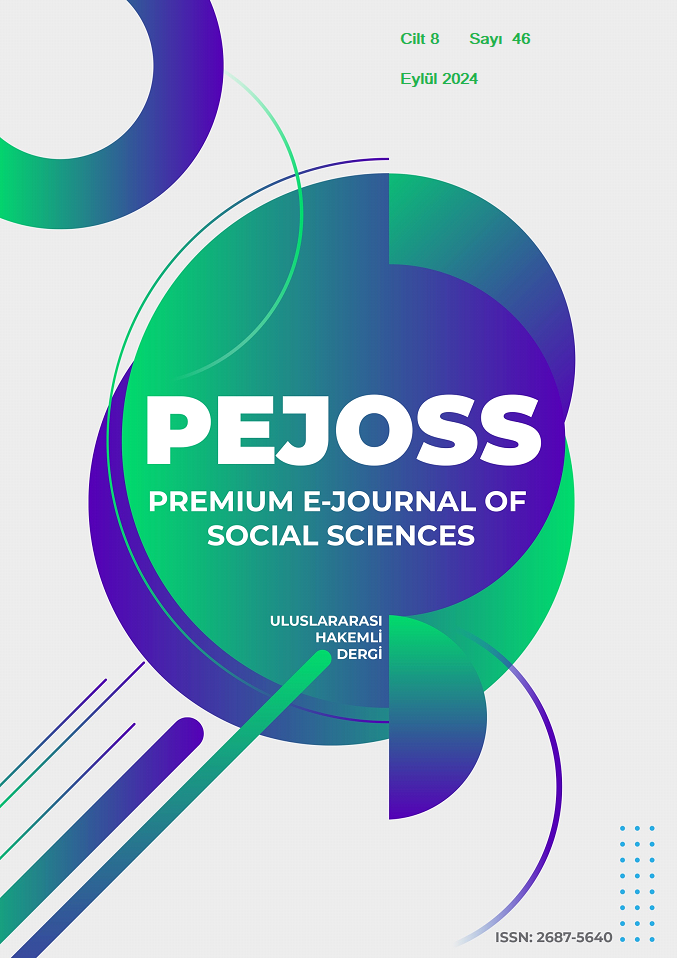Women's Poverty and Fiscal Policies
DOI:
https://doi.org/10.5281/zenodo.13881484Keywords:
Women, Fiscal Policy, Poverty, TurkeyAbstract
Poverty in the world, especially women's poverty, has started to increase after COVID-19. It is estimated that this increase will continue due to the climate crisis. The main reasons for women's poverty are the low participation rates of women in the workforce, their inability to benefit from educational opportunities equally, and the lack of gender equality. The aim of the study is to investigate the dimensions of women's poverty in the world and in Turkey and to examine the fiscal policies implemented. The study showed that female poverty and the rate of women working unregistered were high in Asian countries, the Middle East-North Africa, and Sub-Saharan Africa, where gender inequality was highest. In Turkey, it has been observed that the female poverty rate is 33% by 2023. In the study, it was seen that many countries implemented gender-based budget policies regarding women's poverty, and within this framework, they implemented some policies aimed at reducing women's poverty through fiscal policy tools, especially taxes and public expenditures.
Downloads
References
Azcona. G. and Bhatt. A. (2023) Poverty is not gender neutral, https://sdg-action.org/poverty-is-not-gender-neutral/
Abramovsky, L. and Selwaness, I. (2023), Fiscal Policy and Gender Income Inequality: The role of taxes and social spending, pp: 1-53, https://www.researchgate.net/publication/371947443_Fiscal_ policy_and_gender_income_inequality_The_role_of_taxes_and_social_spending
Altay, A and Aslanpay, E. (2016). Understanding Women's Poverty: An Evaluation of Turkey, Karatahda Business Writing Magazine, (4), 1-30,
Bardakçı, Ş and Oğlak, S. (2022). Gender Inequality Index and Turkey, Journal of Social Policy, 3, 71-90.
Buz, S. and Öngen, Ç. (2018). Poverty Fighting Policy in Turkey in Terms of Gender Equality, Journal of Social Sciences, 21, 321-338,
Eurostat (2024). Social Protection Statistics, Social Benefit, https://ec.europa.eu/eurostat/ statisticsexplained/index.php?title=Social_protection_statistics__social_benefits#Expenditure_on_ social_protection_benefits_by_function
Eurostat (2023). File: Figure:1 Employment rate by sex, 2023 (%, aged 20 to 64).png, https://ec.europa.eu/eurostat/statisticsexplained/index.php?title=File:Figure_1_Employment_rate_ by_ sex,2023_(%25 ,_aged_20_to_64).png
Fabrizio, S. et al. (2020). Women in the Lober Force: The Role of Fiscal Policy, p:1-42, https://dspace.ceid.org.tr/xmlui/bitstream/handle/ 1/904/ women%20labor% 20force%20imf.pdf? sequence=1&isAllowed=y
Fırat, M. (2013). Poverty in Developing Countries and Turkey, Trakya University Journal of Social Science, 15 (1),185-206
Gölçek, A.G. and Organ I. (2023). Evolution of Poverty Paradigms: A Historical and Conceptual Review, Political Economic Theory, Special Issue, 69-96,
IMF. (2020). Women in the Labor Force: The Role of Fiscal Policy, pp: 1-22, imf.org/en/Publications/Staff-Discussion-Notes/Issues/2020/02/11/Women-in-the-Labor-Force-The-Role-of-Fiscal-Policies-46237
IMF. (2018). Persuing Women's Economic Empowerment, Meeting of G-7 Ministers and Central Bank Governors, Whistler, Canada, https://www.imf.org/en/Publications/Policy-Papers/Issues/ 2018/05/31/pp053118pursuing-womens- economic-empowerment, p:1-28
ILO. (2021). How to Assess Fiscal Stimulus Packages From Gender Equality, p:1-25, https://www.ilo.org/ publications/how-assess-fiscal-stimulus-packages-gender-equality-perspective
OECD. (2022). Tax Policy and Gender Equality, p:1-52, https://www.oecdilibrary.org/docserver/b8177 aeaen.pdf?expires=1721591077&id=id&accname=guest&checksum=D81B65EB6E0E36955F1B1DD906C90824
Öztürk, M and Çetin B.I. (2009). Poverty and Women in the World and in Turkey, Journal of Yaşar Üniversity, 3(11),2661-2698,
Şener, Ü. (2009). Women's Poverty, 2009, p:1-12, https://www.tepav.org.tr/upload/ files/1271312994r5658.Kadin_toplugu.pdf
World Bank (2021), A Global View of Poverty, Gender and Household Composition, p:1-29, https://documents1.worldbank.org/curated/en/776061614181162133/pdf/A-Global-View of Poverty-Gender-and-Household-Composition.pdf
World Bank (2018). Gender Differences in Powerty and Household Composition Through the Life, Cyclehttps://documents1.worldbank.org/curated/en/135731520343670750/pdf/WPS8360.pdf, p:1-45
TURKSTAT. (2023). Women in Statistics, https://data.tuik.gov.tr/Bulten/Index?p=Istatistikzler-Kadin-2023-53675
TURKSTAT. (2023). Poverty and Living Conditions Statistics, https://data.tuik.gov.tr/Bulten/Index? p=topluluk-ve-Yasam-Kosullari-Istatistikleri-2023-53713
TURKSTAT. (2023). Social Protection Expenditures, 2000-2022, https://data.tuik.gov.tr/Bulten/Index?p =Sosyal-Koruma-Istatistikleri-2000-2022-53834
UN. (2022). Progres on the Sustainable Development Goals, The Gender Snapshot, p:1-31, ttps://www.unwomen.org/sites/default/files/2022-09/Progress-on-the-sustainable-development-goals-the-gender-snapshot-2022-en_0.pdf
UN. (2023). Development Program Annual Report, pp: 1-21, file:///Users/meralfirat/Downloads/annual-report-2023.pdf,
Yılmaztürk, A. (2016). Causes of Women's Poverty in Turkey and Methods of Fighting It, Balıkesir University Social Sciences Institute Journal, 19(36),769-796,
Yıldız, S. and Uğur, A. (2016). Gender-Sensitive Budgeting and Country Experiences, Manas Journal of Social Research, , 5(3),271-292
Downloads
Published
How to Cite
Issue
Section
License
Copyright (c) 2024 Premium e-Journal of Social Science (PEJOSS)

This work is licensed under a Creative Commons Attribution 4.0 International License.


